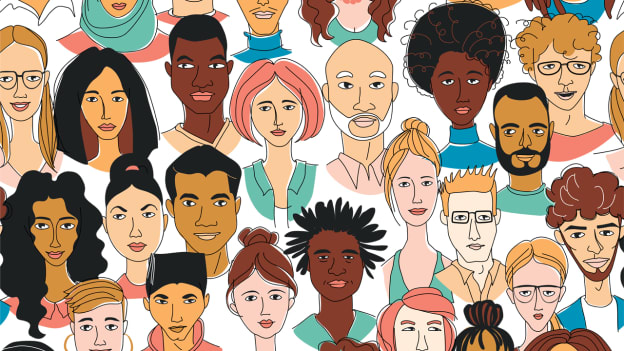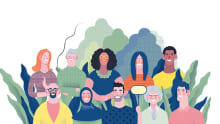Shedding the unconscious bias: Time to move the needle for diversity

Diversity has been a case in point for boardroom discussions for a while now, and not just a ’buzzword’ like some might contest. This shift has come in for all the right reasons, especially when we look at STEM [science, technology, engineering and mathematics]. Every organization is now mulling over ways to make their work environment all-inclusive. New progressive policies are being introduced to encourage and sustain women employees in the workforce. However, a bigger and more holistic question that arises is, whether implementing policies alone is enough to bridge the strong gender gap that exists in today’s workforce?
Speaking realistically, NO! It is definitely a step in the right direction but not the only thing that will decrease the parities that exist in our workforce. Leveraging diversity to create a culture of inclusion is an ongoing journey and the industries are heading in the right direction by prioritising them in the organizational strategy. There is no denying that organizations across the globe need to raise the level of diversity in their leadership and build a greater understanding around the value of an equal and enabled world.
To uproot this beast, it is crucial to understand the underlying obstacles that are hindering progress. If we look closely, a lot of these ‘hindrances’ arise owing to cognitive biases - the tendency of individuals to perceive and deduce information based on their own experiences as well as preferences, parallel to the rather infamous terms, prejudices and stereotypes. Such beliefs lead to unconscious bias, wherein individuals tend to inadvertently hold on to social stereotypes about a group/individual, outside of their own experiences.
Unconscious bias is an implicit prejudice we all have. Nobody is immune to it. According to Nobel-winning neuroscientist, Erik Kandel, 80% to 90% of the mind works unconsciously, which implies that the brains of even the most unbiased people still exhibit the primal inclination. Our brains are accustomed to using visual, verbal and behavioural cues to categorise others, and these are crucial for individuals to gauge a threat.
Sometimes the same implications of what Malcolm Gladwell called ‘thin-slicing’ apply, we develop patterns or beliefs for the ease of speed-oriented demystification of problems (done with the right intentions), which can also increase the level and depth of stereotypes individuals tend to form. The paradoxical element of thin-slicing is that it helps individuals not feel burdened with information, but the flip side would be a big one, in a way it concretised stereotypes that people should move away from.
Although it may look like a reflex, which happens instantly and involuntarily, the impact of unconscious bias tends to trickle to each aspect of an individual’s work-life cycle, from the interview and on-boarding to even delegation of work and promotions. In fact, a recent report by IDC calls out unconscious bias in the workplace as real. The report further states that while it may seem obvious that women want the same outcomes from their career as men, there is a prevailing myth that women are somehow less ambitious, less dedicated to their work (in favor of home life) or have less aptitude for technical work. These falsehoods — while fading — carry a long tail of bias that impact promotions, workplace behavior and company benefits.
Unconscious bias seeps into our society primarily from cultural and social conditioning, sometimes backtracks to generations. This implies the environmental cues we pick up when we’re interacting with others from our close affinity-based associations to every element in our environment. So how do we move away from a behaviour pattern that is so deep-rooted, instant and complex?
“The first step in solving a problem is to recognize that there is one”
Accepting, whether we like it or not, we all in some form or another are victims to our subconscious and thereby, we can be unconsciously biased. This is the first step of recovery in this journey. This works at an individual level, which then acts as a ripple effect and impacts others. Being mindful plays a key role here - being mindful of how we interact with each other, being mindful of how our processes and systems are, and being very mindful of how we tackle our hurdles. Complex and integrated nuances like these cannot be squashed in one go. The only way we will be able to mitigate this way of mindset would be by self-introspection and applying positive changes to our workplaces.
For instance, while empathy is a crucial component of good management, keeping an open mind when entering into return-to-work conversations is just as important. We should make decisions and align processes based on what the employee wants, not what we think they would want.
Another aspect would be to encourage conversations and workshops that will help understand the nuances in every individual’s life. Exposure to the myriad of experiences each individual has gone through can have a deep impact on others, and ultimately changing their approach towards each other for the better.
Measuring is as paramount to success as are efforts. Charting a roadmap of progress for each individual/group, with honesty being a key component, coupled with transparent feedback on the initiatives taken to curb bias, could be critical in bringing this paradigm shift.
Let’s face it – when it comes to cultivating an equitable culture, there is no one size fits all approach we can look at, as there are too many variables to measure and control. These aren’t changes that can come in a wave and solve all the issues at hand in one go. That said, what we CAN do is to take learnings at an individual level and apply them gradually to our professional workplaces. This is an obstacle that we, as a society, have to be aware of, and make every workplace an equal opportunity environment where people can be their authentic selves.
Ultimately, creating an equal world is the only way to build an enabled world!















